Sizergh Castle and Garden is one of the few houses that is still in family residency from the 13th Century. The state was originally in the hands of The Deincourt family until a Deincourt heiress married William de Stirkland in 1239. The Strickland family still live in part of the castle to this day. The Castle is owned by the National Trust now.
.
The castle is a fine stone building and in excellent condition. It has been changed over several centuries but still maintains a family feel to it. The Great Hall was added to the building in 1450, and during Tudor times more buildings and wings were added. The courtyard below has three sides and is open on the fourth.

Sizergh Castle, Cumbria - Northern England
by Veronica
This medieval, fortified manor house couldn't be much further north in England. I visited today with my family. It is a delight. Sizergh is pronounced "Size - zer" in English.
Sizergh
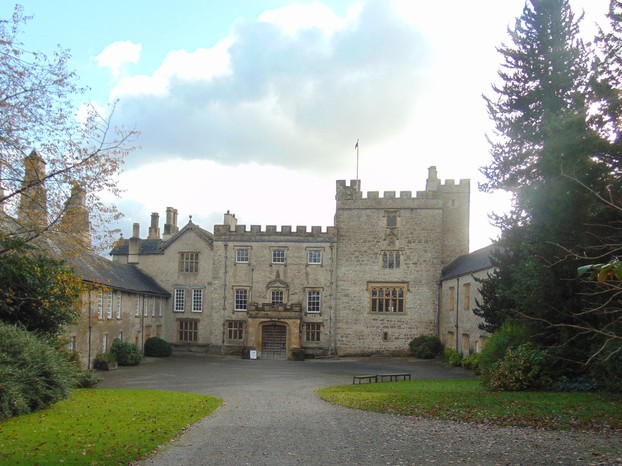 Sizergh Castle entrance |
The gardens
The Stumpery
This was new to me. I hadn't heard of a "stumpery " before. A stumpery is an area where tree stumps are used as decorative features. Wild fungus grow on them and there are huge varieties of ferns too.
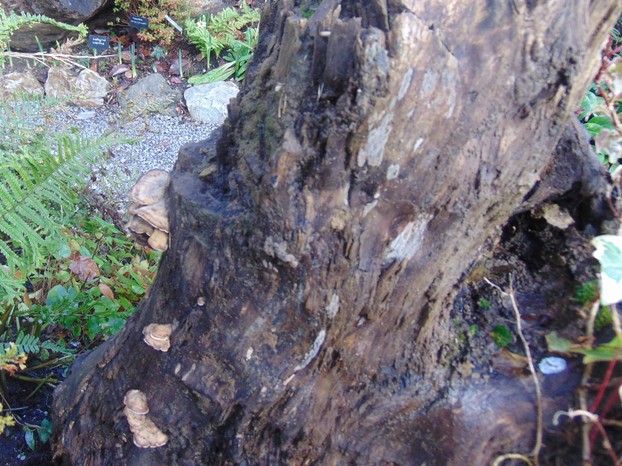 Tree stump garden |
The kitchen garden
The Stumpery leads on to the Kitchen Garden. This is beautifully maintained and developed. There are several unusual varieties of apples. English apple varieties are in serious decline and Sizergh has managed to maintain some old varieties. Peppers and aubergines ( egg plants ) grow in the green houses.
The rock garden and orchard
The rock garden is a delightful nook with little streams and cascades of water flowing over the rocks. It is close to the orchard. All the apples had been stripped already but there are bee hives which produce honey. The dahlia walk near the house is thriving with solitary bees.
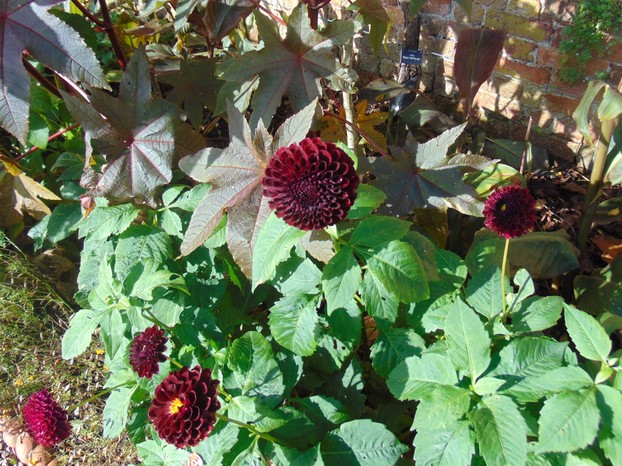 dahlias |
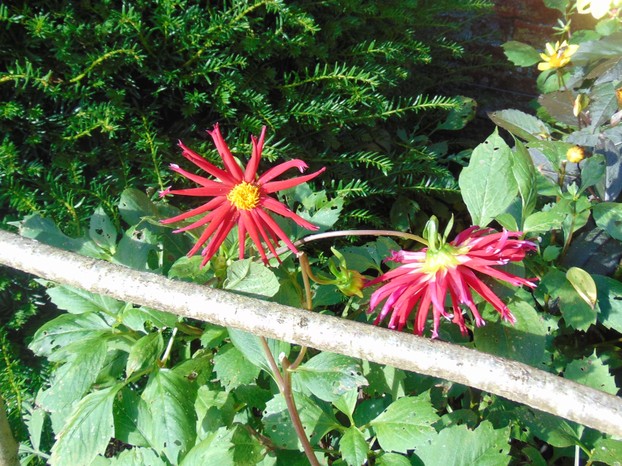 The dahlia walk |
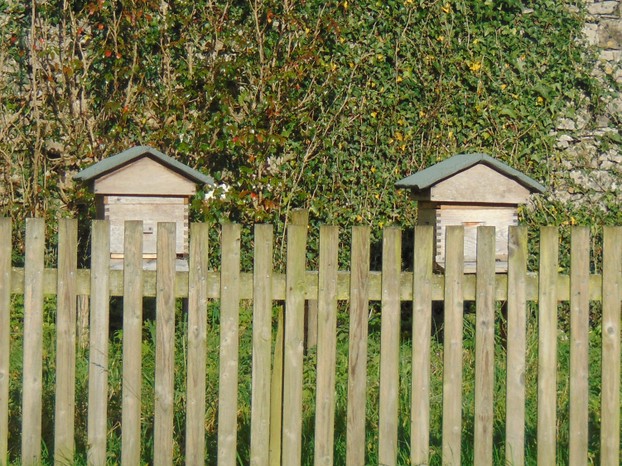 Separate bee hives from the solitary bees on the dahlia walk |
The Castle
Remarkably, the castle itself has a homely feel to it. Scattered around the rooms are family photos as would be found in any home. The picture below shows the different types of stone used over several extensions.
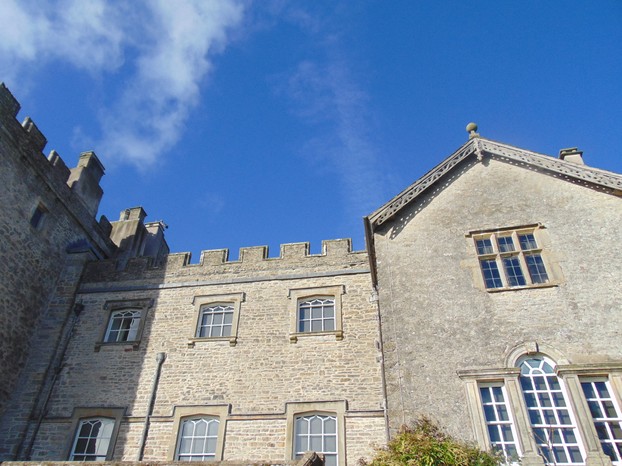 the castle under an autumn sky |
This is a very old back door. If you look carefully you will see that the third section has a smaller door inside the large door. This was for security so any attackers could not gain entrance easily. Not many of these doors survive. Only the smaller door needed to be opened.
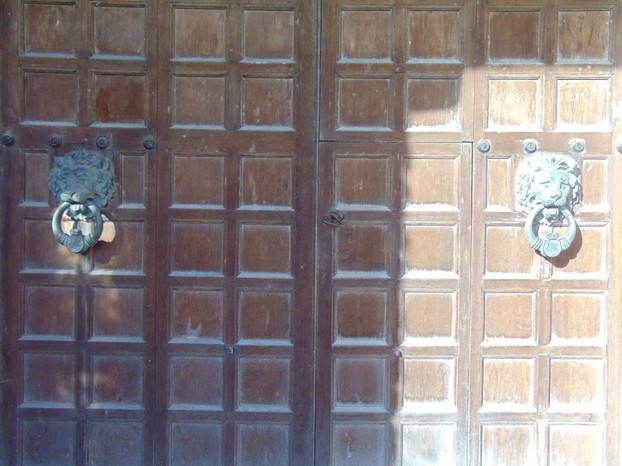 An ancent door with a small door inside it. |
Tudor Tester bed
This bed is a Tudor Tester bed. It is often mistaken for a 4 poster. A Tester bed has a top on it as seen here. The top is wooden and carved. There are several Tester beds with beautiful embroidered covers.
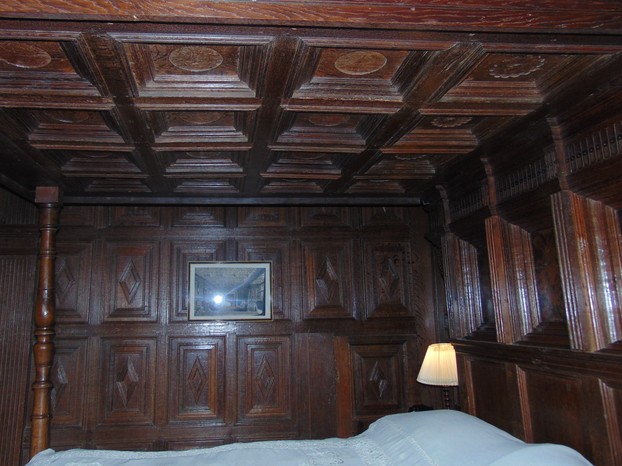 The Tudor Tester bed |
Minstrel gallery
This is part of the medieval tower and typical of a medieval house. The minstrel gallery was above the dining area so that music was played whilst people ate.
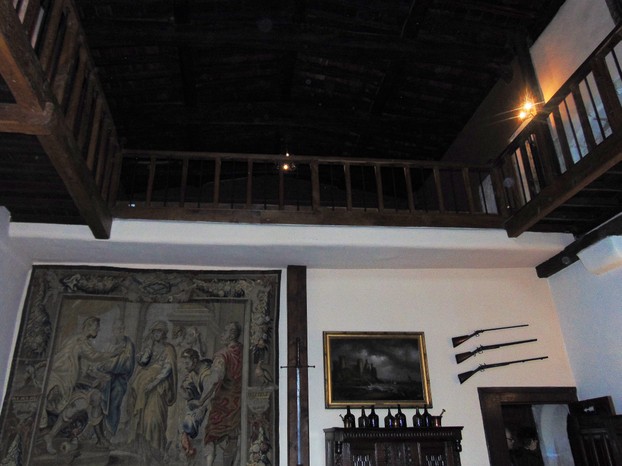 Ancient dining room and minstral gallery above |
Stairs
Despite the renovations and changes, the staircases have stayed in sturdy, thick old stone.
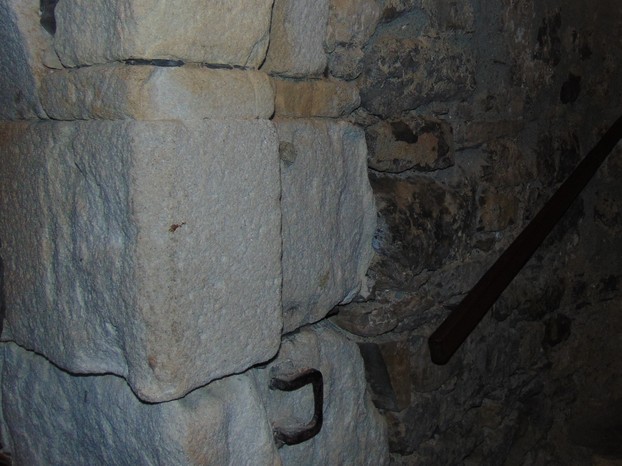 old stone stairs |
Conclusion
This is a fine old house dating from several periods but mainly from the 1200's. The gardens themselves are worth a visit and the castle is enchanting.
It is near Kendal in Cumbria in the far north of England, approx. 50 miles from Scotland and close to transport links. Enjoy it.
You might also like
Bassenthwaite; Lakeland Wildlife Park, CumbriaNorth Cumbria near the English borders with Scotland is not where you'd expec...
Force Crag Mine, Braithwaite,CumbriaI am in Cumbria for a few days and today I walked 6 miles there and back to v...
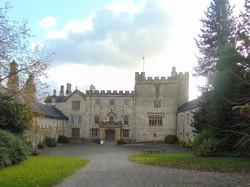

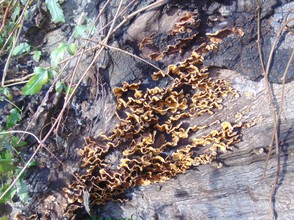
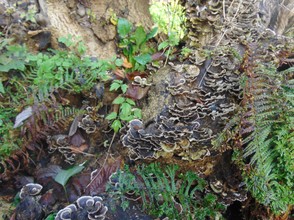
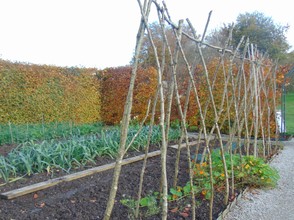
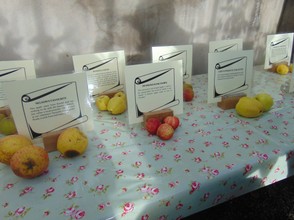
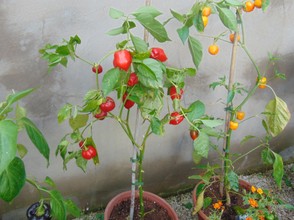
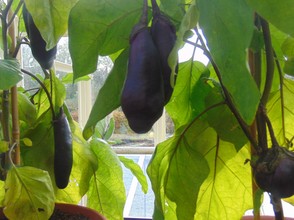

 Blarney Castle and Gardens, County Corkon 06/01/2023
Blarney Castle and Gardens, County Corkon 06/01/2023
 An Cóbh, Corcaigh, Eireon 05/29/2023
An Cóbh, Corcaigh, Eireon 05/29/2023
 Dublin ; The Book of Kellson 04/04/2023
Dublin ; The Book of Kellson 04/04/2023
 The Bee Tree Community CIC;- an online support communityon 08/24/2022
The Bee Tree Community CIC;- an online support communityon 08/24/2022
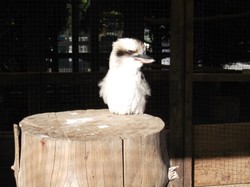
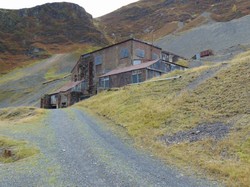
Comments
Perhaps my favorite photo here is the stumpery.
It's so environmentally friendly to include tree stumps even as the latter kindle environmental health through their roots nourishing the underground soil food web and providing above-ground life with their energizing, sugary exudates.
Might the garden mention the tree stumps' species names?.
Yes indeed. Infact some of the dialect words are evry NOrse, even to this day.
Bear in mind that the far North West of England had very heavy settlement from Norse folk, who came via Dublin. That area is the part of England with the greatest Norwegian heritage.
There are still Deincourts/ Stricklands living on the property! They gave it to the National Trust but are allowed to still live there. Best of both worlds.
Sizergh is from Old Norse … this is very North of England of course . It means dairy farm
Veronica, Thank you for sharing Sizergh with us! Are there still Deincourt descendants or did the line go extinct with the title? Is there a known meaning to the name Sizergh?
NB A stumpery has a Wikipedia page ! Who would have thought it. !?
https://en.wikipedia.org/wiki/Stumpery
They were popular in Victorian times.
Katie, It is indeed a beautiful place to visit. I know many Wizzley people love seeing where we all live : me included.
Castles though are quite unique in people's minds. They conjuror all sorts of images.
Oh my what a wonder, castles are so intriguing. I imagine all sorts of dramatic incidents occurring in such majestic castles. I have often thought how cool it would be to live in such a place. I love the estate, land and all the wonders of nature and gardens.
It certainly makes for a fascinating exhibit as the tester is beautifully carved too.
Have you been to Sizergh ? it is about 90 minutes from your home and I think you would enjoy it.
The aim of having curtains was to ensure not only privacy, but also to retain warmth, important in drafty castles and manor houses, so there had to be some covering at the top,otherwise the warmth would not be retained. So it would seem that there may have been several practical uses for the wooden roof of the tester bed.